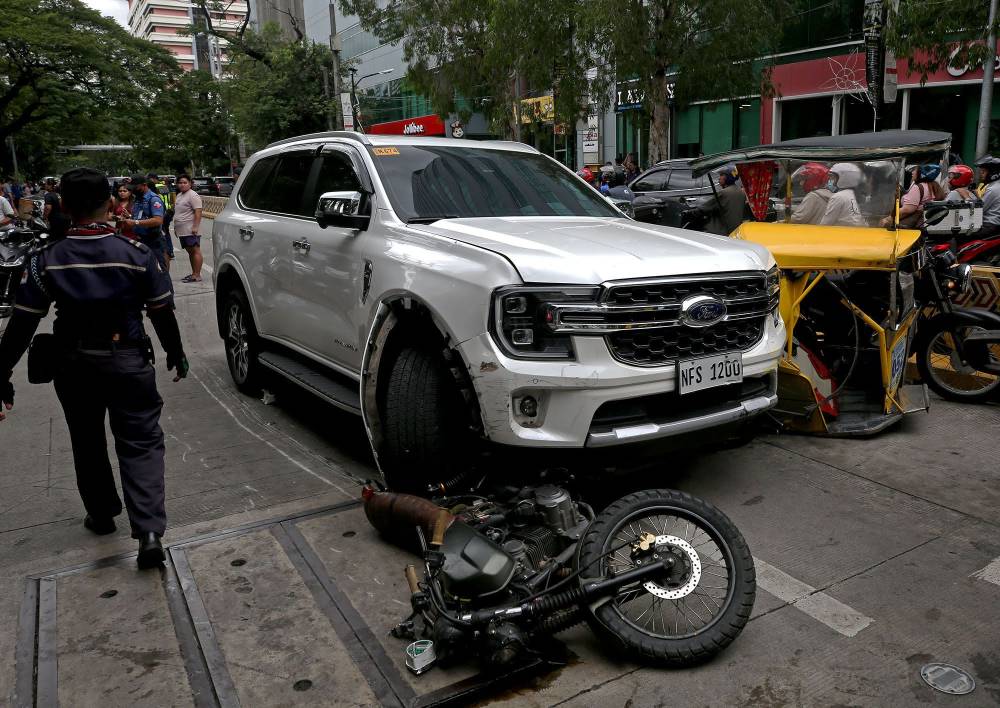Officially worse than fireworks: DOH tallies 31% spike in holiday road-crash mishaps

The Philippines has a long and storied tradition with ‘paputok’ or fireworks.
Culturally, it is part of the audio-visual spectacle that we are so fond of putting on – a fiesta may have brilliant colors, booming drums and flashy dancers, but it wouldn’t be complete without the piercing crackles and pops of paputok. And given our country’s acceptance of Chinese New Year traditions, paputok is vital in warding off evil spirits.
For decades, paputok has been a fixture in our holiday seasons, particularly during Christmas and New Year. But another fixture is news of the number of people in emergency rooms, agonizing over spilled blood and horrific burns, after the paputok they were handling went awry.
This year is no different – from Dec. 22, 2024 to Jan. 1, 2025, the Department of Health (DOH) recorded 340 firecracker-related injuries from its 62 sentinel sites. Laudably, this is a 34-percent drop from the same period last year.
But over the recent holidays, a new menace took the macabre crown of the paputok – road crashes.
Top killer of kids
From Dec. 22, 2024 to Jan. 1, 2025, when many Filipinos travel on vacation, the DOH recorded a staggering 529 road-crash mishaps, including 6 dead.
The agency said this is 31 percent higher than the same period last year. It also found that 94 mishaps involved driving under the influence of alcohol, 383 involved motorcycle riders and 459 involved not using mandatory safety equipment like motorcycle helmets and seat belts.
The DOH gathers data because road crashes are one of the world’s biggest public health concerns. The World Health Organization (WHO) 2023 Global Status Report on Safety reported that around 1.19 million people worldwide were killed in road crashes in 2021, including 11,096 Filipinos recorded by the Philippine Statistics Authority.
This makes road crashes the 12th leading cause of death globally, behind the likes of kidney disease and cirrhosis of the liver. More chillingly, the WHO said it is the number-one killer of young people aged 5 to 29 worldwide, beating out tuberculosis, self-harm, and HIV and AIDS.
“We must admit that the holiday season is not the ‘normal daily drive,’” lawyer and Automobile Association of the Philippines (AAP) trustee Robby Consunji told Inquirer Mobility in an exclusive interview.
“There is a lot of social pressure to attend socials involving considerable road travel,” he added. “There is pressure for business to address the increased demand for the season and there is pressure to cram work (and not rest) in order to take that deserved holiday. Drivers need to be reminded to prepare for the drive during the holidays.”
Poor enforcement kills
Yet, many of the issues noted by the DOH are already traffic violations.
Covered laws include Republic Act 8750 or “The Seat Belt Use Act of 1999,” Republic Act 10054 or the “Motorcycle Helmet Act of 2009” and Republic Act 10586 or “The Anti-Drunk and Drugged Driving Act of 2013.” But the government’s data belies its own shortcomings, particularly lackluster enforcement.
“Enforcement visibility is really important,” lawyer and ImagineLaw executive director Sophia San Luis told Inquirer Mobility in an exclusive interview.
“Local government units (LGU) also play an important role in this,” she added. “The Land Transportation Office (LTO) should coordinate with LGUs to ensure that there is still enforcement around the holidays.”
Meanwhile, the Move As One Coalition told Inquirer Mobility in an exclusive interview that authorities must review how legislation like R.A. 10054 and R.A. 10586 are enforced.
“One shortcoming in the country’s helmet-wearing law is that it does not require fastening,” the group said. “Motorcyclists with loosely fastened helmets compared with those with firmly fastened helmets increased their risk of head injury almost two-fold.”
“Investments in sufficient calibrated breathalyzers and trained law enforcers are both essential in carrying out random breath testing (RBT),” the group added. “RBT is a proven, cost-effective and life-saving measure.”
This is all the more urgent given the government’s commitment to cutting road traffic deaths by 35 percent in 2028 under the latest Philippine Road Safety Action Plan. This covers five pillars, namely: road safety management, safer roads, safer vehicles, safer road users and post-crash response.
By contrast, authorities have cracked down heavily on paputok following the signing of Executive Order 28 by former President Rodrigo Duterte last July 2017. The measure, which adds to the provisions under Repubic Act 7183, provides stricter regulations on the sale and use of firecrackers and other pyrotechnic devices.
Last month, the Philippine National Police released a list of 28 banned firecrackers. Aside from classics like the ‘Watusi’ and the ‘Pla-Pla’, it also included wannabe weapons of war like the “Bin Laden” and the “Goodbye Philippines.”
Up to P730B in taxes wasted
Besides the crippling financial burden on loved ones who must pay for hospital expenses (or worse, funeral expenses) for road crash victims, these entirely preventable incidents burden us all as taxpayers.
Road crashes cost an estimated 3 percent of our gross domestic product (GDP), which is a measure of our economic strength. Using the World Bank’s computation of the Philippines’ 2023 GDP, all this carnage cost us around P730 billion that year for everything from fixing damaged roads to providing medical care.
Consunji said there must be an independent transportation safety board that can competently determine the causes of road crashes.
“There seems to be a missing step in the causal connection to road crashes,” he said. “Crash helmets and seat belts are no doubt important to mitigate injuries or deaths. But what is being done to mitigate crashes?”
Consunji added that the AAP continues to conduct road safety campaigns, particularly for children, parents, teachers and barangay officials. Meanwhile, the Move As One Coalition reiterated its call on the government to give pedestrians and cyclists the “highest priority in the hierarchy of road users” in line with the Philippine Development Plan 2023-2028.
Centralized data needed
As of press time, the DOH reported that paputok has retaken the lead from road crashes – the tally stands at 843 to 703 last Jan. 6.
But Consunji said many more mishaps may not have been recorded, given that the health department’s road-crash-mishap monitoring sites are almost eight times fewer than those for firecracker-related injuries.
“The DOH data is a good starting point for data analysis and the formulation of road safety programs and injury-prevention measures,” he said. “But the DOH, LTO and Metropolitan Manila Development Authority seem to be running different data-gathering systems. There is a need to integrate the data.”
San Luis also called on authorities to beef up their investigation and data-collection practices.
“One way the government can contribute to better road-crash data is through improved medico-legal death investigation,” she said. “Causes that contribute to road crashes should be reported to the Philippines Statistics Authority so that they are reflected in official records.”
It would be a shame for all that hard work to reduce firework-related injuries to just be replaced by grisly photos and videos of mangled cars and motorcycles, along with dead bodies on the street.




















